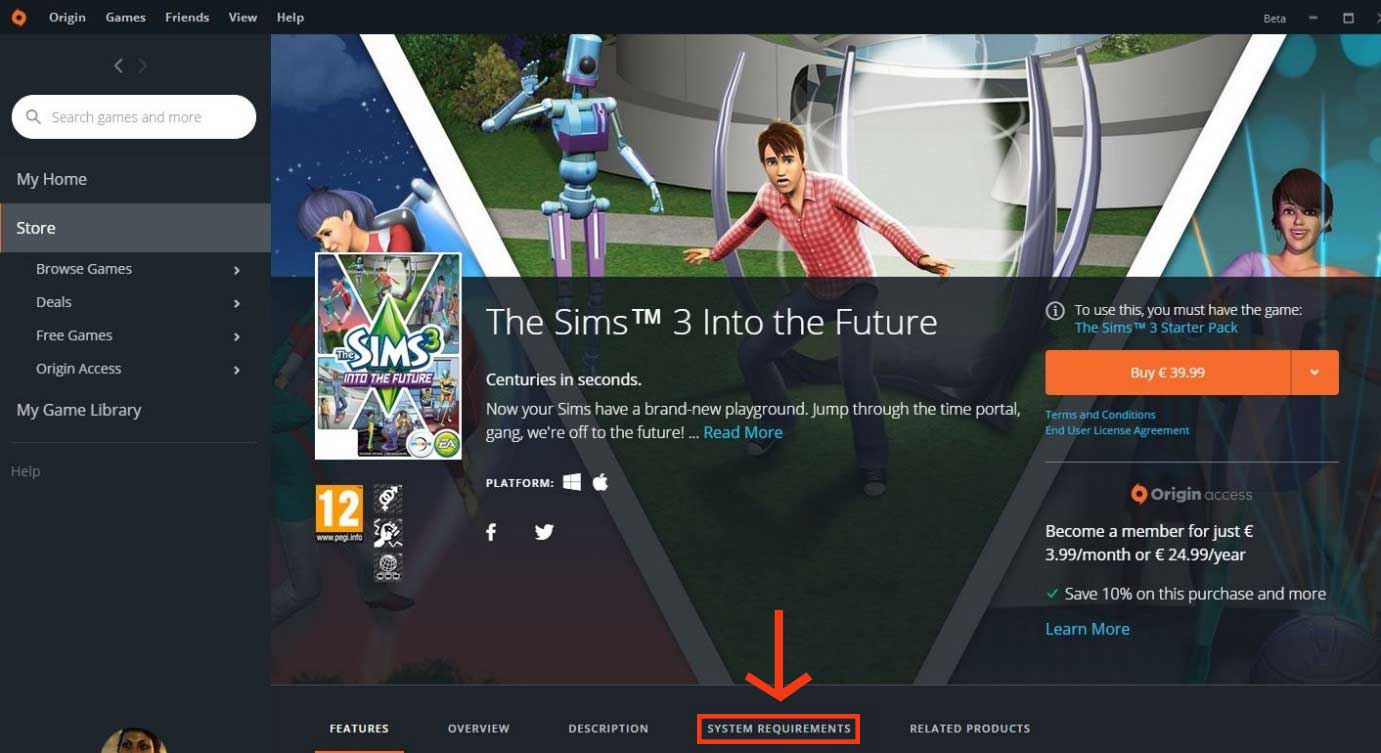The Forgoatten Isles Mac OS
Hey guys, today I am going to be showing you how to reset the password of any account on your MAC device without losing any data!.This method works on all M.
Your Apple ID is the account you use to sign in to all Apple services. If you forgot your Apple ID or aren't sure you have one, there are a few ways to find it. You can also reset your password to regain access.
See if you're already signed in with your Apple ID
Follow these steps to see if you're signed in on one of your devices with your Apple ID:
On your iPhone, iPad, or iPod touch
Look for your Apple ID in your iCloud or Media & Purchases settings.
iCloud
The Forgoatten Isles Mac Os X
Media & Purchases
About This Content When a violent tremor shatters the islands of the Deadfire, the greatest wizards in Eora seek out the aid of the Watcher. The archmage Maura has vanished into the depths of a newly opened dungeon located in the Black Isles and threatens to awaken what lies forgotten there. The process will erase all data and install the latest version of MacOS on Mac. In this method, your Mac will erase to factory settings. This method is very helpful to reset the Mac login password. Restart your Mac. And press and hold on command and R key from the keyboard Until you see the Mac OS utility window on-screen. MacOS High Sierra is the newest version of operating system for Mac. And you want it to speed up your Mac. And you want it to speed up your Mac. It is a revamped version of the macOS Sierra with an emphasis on improved data management, better video quality, and impressive graphics. Title Developer/publisher Release date Genre License Mac OS versions A-10 Attack! Parsoft Interactive 1995 Flight simulator Abandonware 7.5–9.2.2.
Tap Settings, tap [your name], then tap Media & Purchases. In iOS 13 or earlier, tap iTunes & App Stores instead.
You can also try these other services:
- Tap Settings, then tap Passwords. In iOS 13 or earlier, tap Passwords & Accounts.
- Tap Settings, choose Messages, then tap Send & Receive.
- Tap Settings, then tap FaceTime.
If you know your Apple ID, but can't turn off Activation Lock, learn what to do.

On your Mac
- Choose Apple menu > System Preferences, then click Apple ID.
- Choose Apple menu > System Preferences, click Internet Accounts, then select an iCloud account from the sidebar.
- Open App Store, then choose Store > View My Account.
- Open FaceTime, then choose FaceTime > Preferences.
- Open Messages, then choose Messages > Preferences, then click iMessage.
The Forgoatten Isles Mac Os Catalina
On your Apple TV
- Open Settings, select Users and Accounts, then choose iCloud.
- Open Settings, select Users and Accounts, select your account, then choose Store.
On your PC
- Open iCloud for Windows.
- Open iTunes on your PC, choose Account, then select View My Account. If you’re signed in to iTunes with your Apple ID, you'll see your account name and email address.
On the web
You can see if you're signed in with your Apple ID on iCloud.com or by going to your Apple ID account page. If you aren't signed in, your Apple ID might prefill on the sign in screen.
You can also look up your Apple ID by entering the full name and email address associated with your Apple ID.
If your mobile phone number is your Apple ID, you might not be able to look up your Apple ID.
From iCloud.com
- Go to iCloud.com.
- If you're already signed in to iCloud, go to Account Settings.
From your Apple ID account page
- Go to your Apple ID account page and click Forgot Apple ID or password.
- When you're asked to enter your Apple ID, click 'Look it up.'
- Enter your first name, last name, and email address. If you enter the wrong email address, you can try again with a different one.
If your mobile number is your Apple ID, these steps won't work.
Try a different email address
Usually, your Apple ID is your email address.* If the steps above don't work, try signing in with each prior email address that you might have used as an Apple ID.
* In some countries and regions, you can use your phone number as your Apple ID.
Learn more about your Apple ID
- If you want to change your Apple ID after you find it, we recommend that you update it in Settings for all of your Apple apps and services.
- You only need one Apple ID. Using multiple Apple IDs might be confusing when you access purchased content or use Apple services.
FaceTime isn't available in all countries or regions.
Turn on and set up FileVault
FileVault 2 is available in OS X Lion or later. When FileVault is turned on, your Mac always requires that you log in with your account password.
- Choose Apple menu () > System Preferences, then click Security & Privacy.
- Click the FileVault tab.
- Click , then enter an administrator name and password.
- Click Turn On FileVault.
If other users have accounts on your Mac, you might see a message that each user must type in their password before they will be able to unlock the disk. For each user, click the Enable User button and enter the user's password. User accounts that you add after turning on FileVault are automatically enabled.
Choose how you want to be able to unlock your disk and reset your password, in case you ever forget your password:
- If you're using OS X Yosemite or later, you can choose to use your iCloud account to unlock your disk and reset your password.*
- If you're using OS X Mavericks, you can choose to store a FileVault recovery key with Apple by providing the questions and answers to three security questions. Choose answers that you're sure to remember.*
- If you don't want to use iCloud FileVault recovery, you can create a local recovery key. Keep the letters and numbers of the key somewhere safe—other than on your encrypted startup disk.
If you lose both your account password and your FileVault recovery key, you won't be able to log in to your Mac or access the data on your startup disk.

Encryption occurs in the background as you use your Mac, and only while your Mac is awake and plugged in to AC power. You can check progress in the FileVault section of Security & Privacy preferences. Any new files that you create are automatically encrypted as they are saved to your startup disk.
When FileVault setup is complete and you restart your Mac, you will use your account password to unlock your disk and allow your Mac to finish starting up. FileVault requires that you log in every time your Mac starts up, and no account is permitted to log in automatically.
Reset your password or change your FileVault recovery key
If you forget your account password or it doesn't work, you might be able to reset your password.
If you want to change the recovery key used to encrypt your startup disk, turn off FileVault in Security & Privacy preferences. You can then turn it on again to generate a new key and disable all older keys.
Turn off FileVault
If you no longer want to encrypt your startup disk, you can turn off FileVault:
- Choose Apple menu > System Preferences, then click Security & Privacy.
- Click the FileVault tab.
- Click , then enter an administrator name and password.
- Click Turn Off FileVault.
Decryption occurs in the background as you use your Mac, and only while your Mac is awake and plugged in to AC power. You can check progress in the FileVault section of Security & Privacy preferences.
Learn more
- Learn how to create and deploy a FileVault recovery key for Mac computers in your company, school, or other institution.
- If you're using FileVault in Mac OS X Snow Leopard, you can upgrade to FileVault 2 by upgrading to OS X Lion or later. After upgrading OS X, open FileVault preferences and follow the onscreen instructions to upgrade FileVault.
- RAID partitions or non-standard Boot Camp partitions on the startup drive might prevent OS X from installing a local Recovery System. Without a Recovery System, FileVault won't encrypt your startup drive. Learn more.
* If you store your recovery key with Apple or your iCloud account, there's no guarantee that Apple will be able to give you the key if you lose or forget it. Not all languages and regions are serviced by AppleCare or iCloud, and not all AppleCare-serviced regions offer support in every language. If you set up your Mac for a language that AppleCare doesn't support, then turn on FileVault and store your key with Apple (OS X Mavericks only), your security questions and answers could be in a language that AppleCare doesn't support.